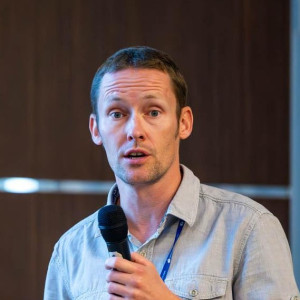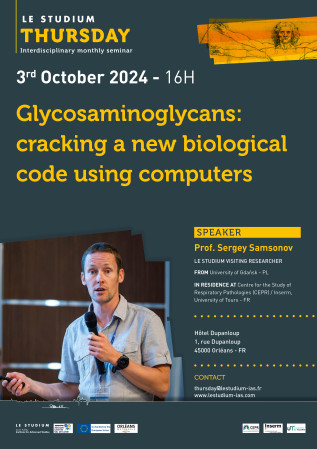Sergey Samsonov

From
In residence at
Centre for the Study of Respiratory Pathologies (CEPR) / Inserm, University of Tours - FR
Host scientist
Fabien Lecaille
BIOGRAPHY
Sergey Samsonov graduated in Biophysics at Peter the Great St. Petersburg Polytechnic University (Russia) in 2006. In his MSc Thesis he applied experimental and computational methodology to characterize a potential copper transporter. He obtained his first PhD in 2009 in Bioinformatics at Dresden University of Technology in the group of Structural Bioinformatics under the supervision of Dr. M. Teresa Pisabarro, where he investigated the impact of solvent and effects of fluorination in protein-protein interactions. In 2010 he obtained his second PhD title in the field of Biochemistry at St. Petersburg University for the continuation of his Master Thesis topic on copper metabolism proteins. Since then and until 2017 he was a postdoctoral researcher in the group of Structural Bioinformatics at Dresden University of Technology within the project “Transregio 67: Functional biomaterials for controlling healing processes in bone and skin tissue – from material to clinic”, where he started to work in the field of modeling GAG containing biomolecular systems. In 2017 he received a joint grant from National Centre of Sciences (Poland) and EU Commission within POLONEZ Programme to start his own research group at the University of Gdańsk. In 2018 he obtained the title of dr hab. at the University of Tours (France) (Habilitation à diriger des recherches). Since 2019, he received three research grants from National Centre of Sciences (Poland), one of which is within collaborative Programme with German Research Council. All projects represent GAG theoretical studies within a broad collaborative interdisciplinary framework. In 2024, Sergey Samsonov was granted a title of Professor from the President of Poland. His research interests are in approaching the understanding of various aspects of GAG interactions with other biomacromolecules and development of specific methodology for this class of polysaccharides with the assistance of molecular docking, molecular dynamics, free energy calculations and quantum chemistry approaches.
PROJECT
Computational approaches for cathepsin-glycosaminoglycan systems
Glycosaminoglycans (GAGs) belong to a class of anionic linear long periodic polysaccharides composed of disaccharide repetitive units. Being major components of the extracellular matrix, GAGs play important roles in numerous cellular processes via intermolecular interactions with growth factors, chemokines, enzymes and other proteins. Alterations in protein-GAG interactions can cause a variety of pathologies including cancer, Alzheimer’s, Parkinson‘s and infectious diseases (e.g., SARS-Cov2), autoimmune and inflammatory disorders. Protein-GAG interactions are thus immensely attractive potential therapeutic targets. However, the molecular mechanisms of protein-GAG interactions are not well characterized. Both classical structure determination techniques and computational approaches face serious challenges when dealing with protein-GAG complexes because of GAG properties as extensive length, flexibility, periodicity, symmetry, multipose binding and high variety of the sulfation pattern. In addition, and consequently, there is only a limited number of the experimental structures containing GAGs. In this project, we aim to study interactions of GAGs with cysteine cathepsins, a family of proteases involved in the onset of various severe pathologies including osteoporosis, rheumatoid arthritis, inflammatory and autoimmune diseases. We will apply the set of computational approaches established particularly for GAG containing systems in the lab of the Applicant that includes molecular docking and molecular dynamics-based analysis tools to get atomistic insights into cathepsin-GAG interactions. This work will represent consistent continuation of the collaboration with the Host lab, which has been ongoing for more than 10 years and resulted in 7 common publications. The presence of the applicant at the host institution will also facilitate effective exchange of the ideas and methodologies between the members from both labs and other labs in the neighborhood.

